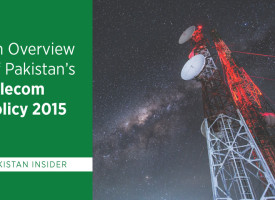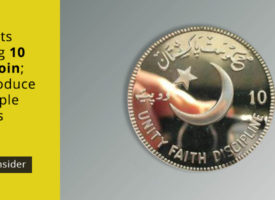Pakistan, officially the Islamic Republic of Pakistan, located in South Asia has 650 miles of coastline on the Arabian Sea and Gulf of Oman. The west is bordered by Afghanistan and Iran. India is to the east and China in the far northeast. The country is strategically located between South Asia, Central Asia, and the Middle East. Land is a valuable natural resource.
Other natural resources include an extensive natural gas supply, some oil, hydro power potential, coal (although not high quality), iron ore, copper, salt, and limestone. Agricultural products are wheat, cotton, rice, sugarcane, eggs, fruit, vegetables, milk, beef, and mutton. Primary industry includes textiles, food processing, pharmaceuticals, construction materials, shrimp, fertilizer, and paper products. Major exports are textiles, rice, leather goods, sports goods, carpets, rugs, and chemicals. Pakistan imports petroleum, machinery, plastic, edible oil, iron, steel, tea, and paper.
Coal
Pakistan recently discovered one low and four low-to-medium quality coal seams in the Punjab. Low sulfur coal was recently reported at the Baluchistan and near Islamabad. Bituminous, sub-bituminous, and lignite coal have been found in Pakistan.
Coal reserves are estimated at 175 billion tons. This would equate to 618 billion barrels of crude oil. When compared to oil reserves his is more than twice the amount of the top four countries. If At KSA’s current usage, the reserves would last more than 200 years.
Oil and Gas
Natural gas production is at a high level in Pakistan. Estimated reserves are 885.3 billion cubic meters (as of January 2009). Gas fields are expected to last for another 20 years. The Sui gas field is the largest, accounting for 26% of Pakistan’s gas production. Daily production is 19 million cubic meters a day. Under the barren mountains of Balochistan and the sands of Sindh, there are untouched oil and gas reserves.
Forestry
Forests are limited to 4% of Pakistan’s land; nonetheless the forests are a main source of food, lumber, paper, fuel wood, latex, and medicine. The forests are also used for wildlife conversation and ecotourism.
Mining
Pakistan has large gold/copper ore deposits at Saindak. There are large deposits of rock salt in the Pothohar Plateau. Pakistan’s mineral resources include reserves of gypsum, limestone, chromites, iron ore, rock salt, silver, precious stones, gems, marbles, tiles, sulfur, fire clay, and silica sand.
Land
About 28% of Pakistan’s total land area is under cultivation. Pakistan boasts one of the largest irrigation systems in the world. According to Wikipedia, “the most important crops are cotton, wheat, rice, sugarcane, maize, sorghum, millets, pulses, oil seeds, barley, fruits and vegetables, which together account for more than 75% of the value of total crop output.” The fertile lands of Punjab are ready to feed a population twice that of current Pakistan.
Uranium
Pakistan has a long history of exporting small amounts of uranium. In 2006 Pakistan produced about 45 tons of uranium.
Water
The fishing industry plays a role in the national economy of Pakistan. The coastline is 814km and fishery resources still have room to grow. Fishing in Pakistan is a major source of export earnings.
Pakistan is rich in diverse natural resources. Pakistan’s human resources include a population of intelligent young people and a burgeoning urban middle class. The culture, knowledge, wealth, and infrastructure are sure to grow and improve in the near future. This combined with its prime location will lead to long-term success for the nation.








Please update these informations. Please
Pakistan has natural resources in large number but its proper utilisation is always needed in many fields… So we would be utilise it if we hard work for the sake of our nation,for Pakistan, not for individuals and personal benefits…be truthful to your work and responsibility…
Pakistan my country is the richest one all over the world .
I LOVE MY COUNTRY.
PAKISTAN ZINDA ABAD.
In a country that has been blessed with so much, why are women and girls treated so harshly. I would say the energy should be spent
in education, training young people in the trades. Make laws that protect the rights of women in general.
Females are pearl of our society and of our country .
if u want to see the true picture of our country , u should ask to the boys who always get defeat from girls in each field . either job or in education . Girls are always Topper.
whatever u said is totally misleading concept of media . they never like to show something good.
do u know Irfa Kareem ? youngest microsoft certified girl …
Wow it is a good home land for me as a Pakistani
Pakistan zindabad
yay lots of rich reasources
Which part of Kashmir is more valuable in terms of natural resources, tourism potential, etc., Pakistan occupied Kashmir or Indian Kashmir?
Kashmir, Pakistan or indian tortured occupied Kashmir …. you worte something wrong
I love my country nd I m proud to be a Pakistani ……Pakistan zindabad
PAKISTAN ktna khobsorat ha i love my Pakistan
whatever
hey CHRISTIAN , i am from CANADA and i don’t get it why u sooo MAd or JELIOUS :P i love my BOTH Country PAKISTAN AND CANADA. I respect every human IN THE WORLD >>>> BE POSITIVE PLEASE :) thankx you
you are right muhammad ali and btw plz dont tell me your the boxer muhammad ali haa haa just kidding
i love pk and now the time is honestly using these resources for pk for nation…..
Gas field k kareb ki zamen k niche se b gas nikalti hai koey maharbani kar k bata sakta hai k us par kanoni haq hai k company se royalty li jaey?
we are love in pakistan and natural resource of pakistan we like pakistan
GO NAWAZ GO
which primary and secondary industries are in Pakistan?
wow
when you have used the word :Wikipedia…I stopped reading it. Wikipedia is nothing more than the general people input. Anyone can go there and write anything they want….so it holds no value.
Hey buddy, once I tried to upload an article on wikipedia (as I was thinking that anyone can write an article) first I had to complete 10 tasks by wikipedia to be able to upload a new article, the task was to edit atleast 10 articles given by wikipedia secondly I had to wait for 3-5 days to get me verified and so when I finally uploaded an article…. It was rejected by the community and wikipedia as they said my article contains inappropriate/wrong information an then I skipped and haven’t tried to upload any article on wikipedia since 2013 as I was very annoyed !!!
OK so we can rely on wikipedia
right ma
that coal reserves in sindh are almost useless, to produce electricity from that coal need a very expensive treatment plant because that coal has high ratio of flaming particles or something like that. so the cost of per unit electricity would be high. and yeah , Pakistan has alot reserves of minerals and about that GOLD mining at saindak , most are foreign companies specially china is digging out gold , copper and other stuff from that ore , but sadly , Most of gold taken by china. and very less ratio come to Pakistan.
Pakistan is really blessed piece of the earth.May God bless us with peace and real leader ship.
may Allah protect our country nd pakistan zindabad
when am in sad mood i see my garden plant………..they bring a smile on my face
koi resources of pakistan par lkhi gai books ka name pta ha ksi ko
natural resourses managment and economics growth of pakistan
Pakistan hamara watan hai.. is me mojod tamam cheezen hamare zarorat hain Hame in ko ahtiat se istemal karna chahye ye hamara farz hai…
God has gifted us with every mineral and resources, the need is just to explore them and use them for bettrment of nation.
As we know Pakistan is not a poor country, it is
poorly manage, so my humble request to young generation be prepare to manage it. “yeh watan tumhara hai tum ho pasban is kay”
These resources make me say that Pakistan has abundance of silk in the land of rags.
People who are empowered to use these resources are not interested. And the wealth that this can bring to the nation is unignoreable. It is enormous. We have interesting areas of FATA and Gilgit Baltistan where tourism industry can be developed to produce a revenue not even the agriculture sector can match. All we need is a will. And our leaders, all of them, lack that.
thnkx sir g ap ke es nice comnts ne mera naturl resorsss of pakistn ks essy complt kar deya thhhhhnnnkkkxxxx
ILOVE MY COUNTRY. IT RESOURSCES ARE GETTING LESS LETS SAVE
OUR NATURAL RESOURCES.
Hiba!!! what are those activities from which our natural resources are getting less?? can you please specify!!!
ILOVE MY COUNTRY. IT RESOURSCES ARE GETTING LESS LETS SAY OUR NATURAL RESOURCES.
Honesty is our finest solution
(y)
03346640899 pak zindabad
i love my country.
Wow pak is rich